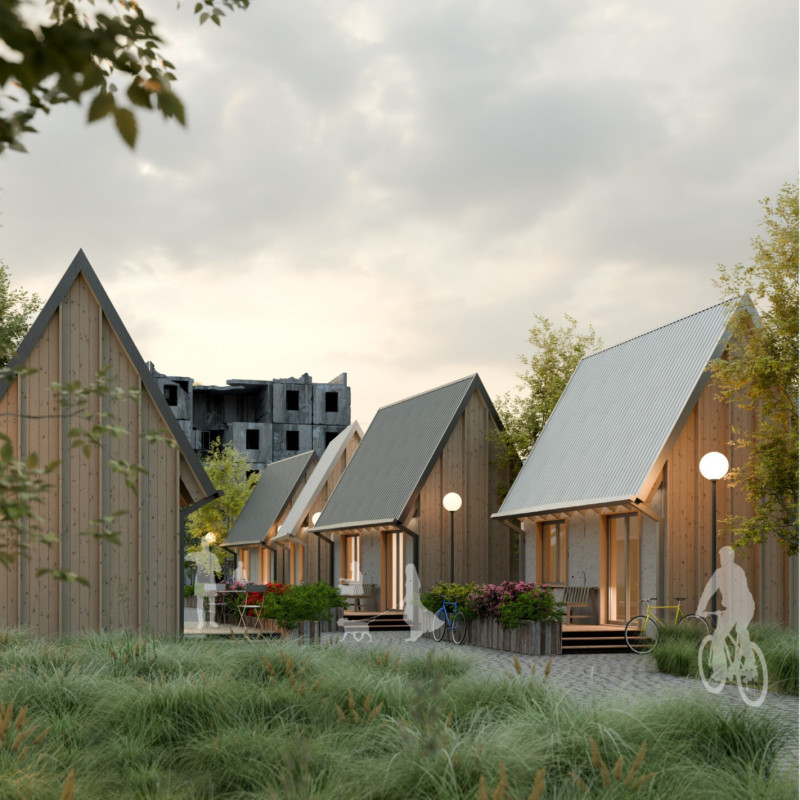5 key facts about this project
At its core, the architecture serves as a multifunctional space, designed to accommodate a variety of activities and social interactions. The layout is meticulously planned, facilitating a fluid transition between public and private spaces. This intentional arrangement encourages collaboration and connectivity among its occupants while providing areas for reflection and solitude. The design reflects a modern approach to architecture, where the physical environment significantly impacts the human experience.
One of the most notable aspects of the project is its materiality. The design employs a range of materials that harmonize with both the built environment and the natural landscape. Concrete is used extensively within the structural framework, offering durability and a clean aesthetic. The strategic integration of glass allows for expansive views and an abundance of natural light, creating a perception of openness and blurring the boundaries between indoor and outdoor spaces. Steel elements provide structural integrity while introducing a contemporary industrial edge, complementing the softer textures of natural materials like timber. The careful selection of brick adds warmth and a sense of history, bridging the gap between contemporary architecture and traditional craftsmanship.
Throughout the project, sustainability is a central theme, with several features designed to minimize environmental impact. Green roofs and vertical gardens enhance insulation and biodiversity, creating a micro-ecosystem that benefits both the building and its surroundings. The project incorporates rainwater harvesting systems, highlighting a progressive approach to resource management that reduces reliance on municipal water sources. Solar panels are another critical feature, seamlessly integrated into the design and encouraging energy efficiency throughout the building’s lifecycle.
The unique design approaches employed within this project are evident in various elements. The architect has prioritized adaptability, ensuring that spaces can evolve in response to changing community needs. This flexibility fosters a sense of ownership and encourages diverse usage patterns, making the architecture relevant both now and in the future. The landscaping has been thoughtfully designed to complement the architectural features, reinforcing the connection with nature and enhancing the overall experience of the space.
In summary, this architectural project is a comprehensive manifestation of thoughtful design principles. It stands as a testament to the potential of architecture to create environments that are not only functional but also enriching to the community and the environment. Those interested in gaining deeper insights into the intricacies of this project are encouraged to explore the architectural plans and sections provided, as well as the various design elements that contribute to its overall cohesion. By delving into these aspects, readers can appreciate the nuances and details that make this project a significant addition to contemporary architectural discourse.


























